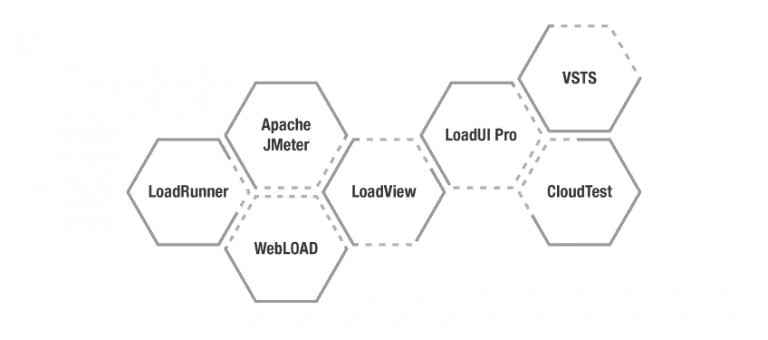
It is important for today’s businesses to visualize that Performance testing forms an integral part of quality assurance. Application Performance Testing is the key to deriving high-performing E-commerce applications, mobile apps, and other customer-facing apps. Performance-tested applications ensure that released software meets the agreed Service Level Agreements (SLA’s) and essentially delivers higher user satisfaction levels. Such well-tested systems perform seamlessly even under varying load conditions with concurrent users.
Content
Statistically, only applications that perform well even when the concurrent user’s access it without any glitches tend to attract and retain the customer base. Such apps help to push up their respective brands. Hence, it is vital for enterprises to take up effective performance testing strategies to maintain and protect their brands.
There are certain performance testing tools that can be used to deliver effective performance to e-commerce, mobile apps, and other systems. Some of these tools are available as open source and as paid tools, which are used to perform various types of performance testing such as Load, Stress, Spike, Volume, Capacity and Soak testing.
7 Performance Testing Tools

LoadRunner:
It is the most widely used tool to test applications, measure system behavior and their performance under varying loads. The tool is used to simulate thousands of concurrent users and record the variations in system performance. Afterward, leveraging those results, the performance of key components of the application can be analyzed. This tool supports all advanced technologies like Ajax, Flex, HTML5.0, Java, SOAP, Citrix along with all other legacy technologies.
Tool Functionality:
It supports testing of a wide range of applications along with continuous testing. The tool effectively identifies performance bottlenecks and displays the root cause analytics.
Apache JMeter:
It is an important open-source tool used to test the performance of both static and dynamic applications. It is a Java-based application used for load and performance testing, which is used to test Web applications, SOAP & REST web services, FTP, databases and more. Interestingly, JMeter is also widely used performance testing tool, which is effectively used to load test web and mobile applications and measure their performance.
Tool Functionality:
Originally it was designed for testing web applications, but later on it has been expanded to test other test functions. It is also used for simulating a heavy load on a server or a group of servers and essentially checks application performance under varied load conditions.
WebLOAD:
This is a widely used tool by enterprises for testing web and mobile applications. It is an effective tool as it combines performance, scalability, and integrity as a single process for testing applications. It is an alternate to LoadRunner.
Tool Functionality:
This tool is used to create mobile load tests either by recording native mobile apps or browser-based apps, directly from the mobile handset. The ease of the tool is; the user can edit any scripts, add parameters and perform validation checks. After creating mobile scripts, it executes the mobile load tests and this tool integrates with a real mobile device.
LoadView:
Tool Overview: It is used for cloud-based load testing and empowers DevOps teams to efficiently test websites, web-apps, and application programming interfaces (API’s) with thousands of concurrent users. The agile and DevOps teams can test their website’s UX under load, verify performance and identify various bottlenecks within applications. This tool simulates API calls, validates API responses and verifies the most important SLA requirements.
Tool Functionality:
LoadView uses the Google Cloud Platform (GCP) and Amazon Web Services (AWS) to generate concurrent users load over the cloud during the load tests. The agile teams can test most complex applications by designing multiple test scenarios to test for. This tool tests and determines if the website (under testing) can handle spikes in traffic by generating load with a set number of concurrent users. Also, it tests the limits of infrastructure, every time by adjusting the load in real time. The test results can be seen in LoadView’s web interface and reports can be obtained either in CSV or PDF formats.
LoadUI Pro:
This tool is used for load testing REST, SOAP API’s, databases and microservices. The simplicity of this tool is, it does not require a specific skill set in load testing and any user can create and execute tests. It is used to guide in building realistic performance test scenarios.
Tool Functionality:
With LoadUI PRO, there is a flexibility to reuse all functional API tests built on the industry’s best open source tools. It helps to reduce the time taken to deploy REST and SOAP web services. It provides key insights that help to fix any performance bottlenecks. Its powerful and intuitive capabilities help to deliver scalable API’s. This tool is used to test the speed and scalability of new changes to the APIs in a short span of time. Users can gain insights from real-time API load tests and ensure that the API will handle any demand effectively.
VSTS:
VSTS stands for Visual Studio Team Services; is an extension of Microsoft Visual Studio. It is an integrated development environment (IDE) and is usually run in the cloud (Azure). The tool is used to load test mobile applications or website’s performance before their launch to check any performance bottlenecks even before it reaches the customers.
Tool Functionality:
This tool is used to run URL-based load tests with Azure DevOps and sets all the required parameters to run the test. When the test is completed, the results display the overall application performance in a separate summary page. This page displays important metrics such as average response time, user load, requests per second, failed requests, other intervening errors along with test usage. Response time pinpoints the time an application has taken to respond to requests which are the key metrics for measuring any app’s performance.
CloudTest:
This tool helps to stress the test the environment to ensure the website or an application is stable even under spikes or in heavy traffic. It generates actionable insights that help dive into the live data and effectively know any performance issues while load testing is in progress. It enables continuous testing process in the cloud (anytime without worrying about any hardware), eliminates traditional costs and gives more value to it.This tool is a useful global load testing platform that is scalable and used to run tests to receive actionable insights from the results.
However, before choosing any performance testing tool, it is important to consider certain factors such as – validate whether the tool is capable to meet the user-expectations, ability to meet the business goals, etc. This will help to build a good testing solution for the requirement.
What are the Critical factors to consider before choosing performance testing tools?
Choose a familiar tool:
It is crucial to adopt a tool that is familiar with the team. Familiarity with the tool will substantially cut down the learning time and help to implement the tool quickly and easily with less efforts for meeting the company’s needs.
Validate the tool’s test environment:
The tool should be able to work with the network and hardware resources to enhance the test environment. If the tool fails to provide the required test environment, then this may not be able to drive the required traffic for the enterprise.
The efficiency of the tool:
While choosing a tool, enterprises should validate the efficiency of the performance testing tool. If the tool is successful to generate the expected number of users with the already existing hardware, then the tool can be considered as efficient.
Check the testing options:
The user options for performance testing vary from tool to tool. So, organizations should choose a tool that is capable to meet the required testing need, and should also be able to resolve the bottlenecks.
Verify the tool license cost:
The value of the tool is an important factor for organizations. While opting for tool selection, organizations should consider the cost frequencies involved with its purchase.
Overall Benefits with Performance Testing Tools:
• Helps in testing current scale & emulate real-time usage at peak loads to validate the performance
• Gives the flexibility to test applications with millions of users and checks system performance
• Helps improve and adjust the efficiency of an application
• Evaluates quickly and effectively the performance issues of software
• Protects brand reputation as the application loads in quickly even in heavy user loads
• Improves application’s optimization and load capacity
• Enable websites and mobile applications to load quickly without any performance issues
Conclusion:
These performance testing tools play an important role in enabling businesses to avail top rated applications without any performance glitches. Businesses need to essentially get their applications tested for performance to ensure that they meet the agreed SLA’s. Performance is key to the livelihood of mobile apps and mobile-optimized e-commerce sites to function seamlessly.
Specific performance testing tools can be used to efficiently test applications and businesses can leverage independent testing service providers to get their applications tested.
Discover more
Get in Touch
Stay Updated
Subscribe for more info





